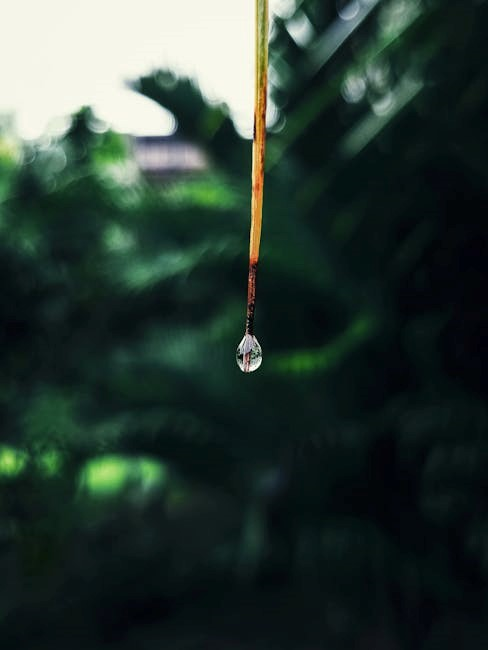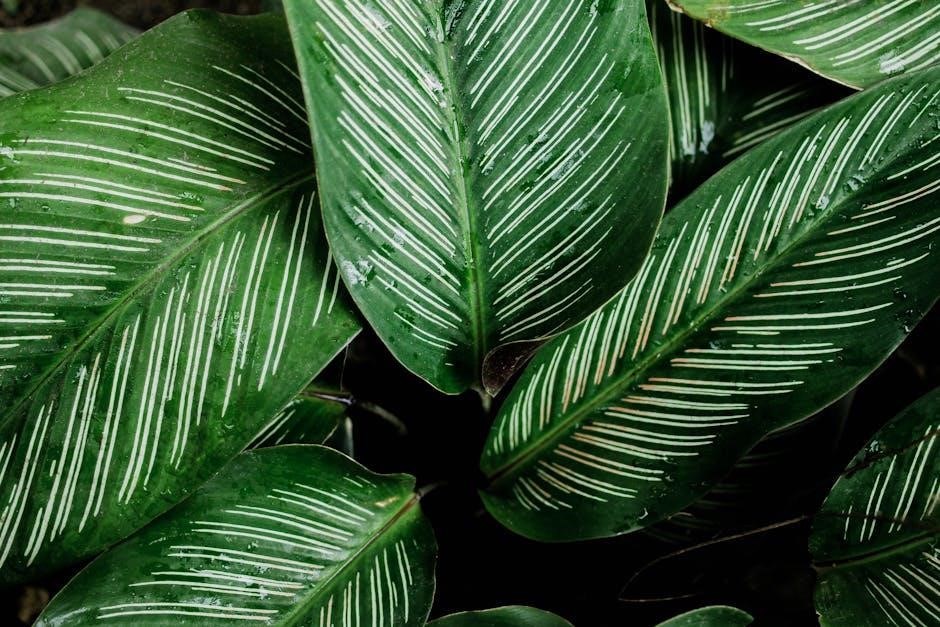Russell Stover Heart Boxes are iconic, heart-shaped chocolate gifts perfect for Valentine’s Day, offering assorted milk and dark chocolates in beautifully designed, durable packaging.

Overview of Russell Stover Heart Boxes
Russell Stover Heart Boxes are beautifully designed, heart-shaped chocolate gift boxes filled with assorted milk and dark chocolates. Available in sizes from 1.5 oz to 20 oz, these boxes offer a variety of delicious flavors, including creams, caramels, truffles, and nut clusters. The Red Foil, Velvet, and Decorative Heart Boxes are popular choices, each featuring unique packaging and a rich assortment of chocolates. They also offer sugar-free options, catering to diverse preferences. Perfect for gifting, these boxes are securely packaged to ensure freshness and safety during transit.
Importance of Heart Boxes in Valentine’s Day Gifting
Russell Stover Heart Boxes hold a special place in Valentine’s Day traditions, offering a thoughtful and indulgent way to express love. Their heart-shaped design and exquisite chocolate assortments make them a timeless symbol of affection. With options like Red Foil, Velvet, and Decorative Heart Boxes, these gifts cater to diverse tastes and preferences. The beautifully packaged boxes, filled with creamy caramels, rich truffles, and decadent chocolates, provide a meaningful and delicious way to celebrate loved ones, making them a classic choice for the occasion.

History of Russell Stover
Russell Stover, founded in 1923 by Russell and Clara Stover, is a beloved American chocolate company known for its rich history, quality, and timeless chocolate traditions.
Founding and Evolution of the Brand
Russell Stover was founded in 1923 by Russell and Clara Stover, beginning with handmade chocolates that quickly gained popularity for their exceptional taste and quality. Over the years, the brand expanded its product line and market reach, becoming a trusted name in American confectionery. Known for its commitment to tradition and innovation, Russell Stover has evolved to meet changing consumer preferences while maintaining its legacy of crafting premium chocolates. Today, it remains a beloved choice for gifting and indulging in delicious, high-quality treats.
Legacy of Quality and Tradition
Russell Stover has built a nearly century-long legacy of crafting premium chocolates with unwavering commitment to quality and tradition. Since 1923, the brand has remained dedicated to using high-quality ingredients and time-honored manufacturing processes. Known for its rich, smooth chocolates and exquisite assortments, Russell Stover has earned a reputation as a trusted name in confectionery. The brand’s passion for tradition and innovation continues to inspire its creations, making it a beloved choice for celebrating life’s special moments, including Valentine’s Day, with its iconic heart-shaped boxes.

Types of Russell Stover Heart Boxes
Russell Stover offers three main heart box styles: Red Foil, Velvet, and Decorative, each featuring unique designs and assorted chocolate treats for every taste preference.

Russell Stover Red Foil Heart Box
The Russell Stover Red Foil Heart Box is a timeless Valentine’s Day classic, available in sizes like 5.1 oz and 20 oz. It features an assortment of 35 pieces, including creams, caramels, truffles, and nut clusters, all enrobed in milk and dark chocolate. The 5.1 oz box offers 9 pieces with 7 flavors, while the 20 oz version provides a larger selection. Known for its elegant red foil design, this box is a popular choice for gifting, combining rich flavors with a beautiful presentation that delights both chocolate lovers and gift-givers alike.
Russell Stover Velvet Heart Box
The Russell Stover Velvet Heart Box is a luxurious Valentine’s Day gift, offering a 10 oz assortment of 17 decadent pieces. It features a rich selection of milk and dark chocolates, including creamy caramels, crunchy nuts, and smooth truffles. The soft, velvety texture of the chocolates pairs perfectly with the elegant heart-shaped box, making it a thoughtful and indulgent gift. This box is ideal for those who appreciate classic flavors and sophisticated presentation, ensuring a memorable treat for loved ones on Valentine’s Day.
Russell Stover Decorative Heart Box
The Russell Stover Decorative Heart Box is a charming and elegant gift option, available in a 10 oz size with 17 assorted pieces. It features a delightful mix of creams, caramels, nuts, and chews, all enrobed in milk or dark chocolate. The decorative design adds a festive touch, making it perfect for Valentine’s Day gifting. This heart box is not only a treat for the taste buds but also a visually appealing present, ensuring a memorable experience for loved ones. Its sturdy packaging ensures safe delivery, preserving the chocolates’ freshness and presentation.

Popular Assortments in Russell Stover Heart Boxes
Russell Stover Heart Boxes offer assorted milk and dark chocolates, including creams, caramels, truffles, and nut clusters, in various sizes from 1.5 oz to 20 oz.
Milk Chocolate Assortments
Russell Stover Milk Chocolate Assortments are a delightful treat, featuring creamy textures and rich flavors. Each heart box includes an array of milk chocolate pieces, such as smooth caramels, crunchy peanut clusters, and velvety vanilla crèmes. These assortments are carefully crafted to provide a variety of tastes, ensuring there’s something for everyone. The milk chocolate assortment is a classic choice, offering a timeless and indulgent experience. Perfectly packaged in heart-shaped boxes, these chocolates are both a visual and culinary delight, making them ideal for gifting or personal enjoyment.
Dark Chocolate Assortments
Russell Stover Dark Chocolate Assortments offer a rich and decadent experience, featuring a variety of dark chocolate pieces. From smooth truffles to crunchy nut clusters, these assortments provide bold, deep flavors. The dark chocolate collection includes indulgent treats like dark chocolate coconut, nut caramel, and vanilla crème, each crafted to satisfy any chocolate lover’s cravings. With their elegant packaging, these assortments are perfect for gifting or enjoying personally, making them a sophisticated choice for Valentine’s Day or any special occasion.
Features of Russell Stover Heart Boxes
Russell Stover Heart Boxes feature iconic heart-shaped designs, unique packaging, and decorative elements. Sturdy boxes ensure secure transit, preserving the chocolates’ freshness and presentation.
Unique Packaging and Design
Russell Stover Heart Boxes boast stunning, heart-shaped designs with vibrant red foil, soft velvet, or decorative finishes. Each box is crafted with durable materials to ensure secure transit and fresh delivery. The iconic heart shape, paired with elegant packaging, makes these boxes visually appealing and perfect for gifting. Available in sizes from 1.5 oz to 20 oz, they cater to various preferences, offering a thoughtful and beautifully presented treat for loved ones on Valentine’s Day or any special occasion.

Size Variations (1.5 oz to 20 oz)
Russell Stover Heart Boxes come in a range of sizes, from 1.5 oz to 20 oz, offering flexibility for every gifting need. The 1.5 oz box includes 3 delicious bites, while the 20 oz assortment features 35 pieces, perfect for indulging. Sizes like 5.1 oz (9 pieces) and 10 oz (17 pieces) provide options for varying preferences. Each size ensures a thoughtful gift, whether for a small gesture or a grand surprise, catering to both intimate and elaborate celebrations with a diverse selection of chocolates.

Gifting Ideas with Russell Stover Heart Boxes
Russell Stover Heart Boxes are perfect for expressing love and care, offering a thoughtful gift for Valentine’s Day, anniversaries, or romantic gestures. Available in sizes from 1.5 oz to 20 oz, they cater to both intimate and grand surprises, making them ideal for any occasion.
Perfect for Valentine’s Day
Russell Stover Heart Boxes are a timeless Valentine’s Day gift, offering a romantic assortment of milk and dark chocolates in elegant, heart-shaped packaging. With sizes ranging from 1.5 oz to 20 oz, they cater to every gifting preference. The boxes feature a variety of creamy caramels, rich truffles, and nutty clusters, ensuring a delightful treat for your loved one. Their sturdy, decorative designs make them a classic choice for expressing love and care on this special day.
Personalization and Presentation Tips
Enhance your Russell Stover Heart Box gift with personal touches. Add a handwritten note or a small memento inside the box for a heartfelt surprise. The sturdy, decorative packaging is already visually appealing, but consider wrapping it in a elegant gift bag or tying a ribbon around it for extra flair. For a romantic presentation, pair the heart box with fresh flowers or a cozy stuffed animal. These thoughtful details will make your gift truly unforgettable and show your loved one how much you care.
How to Choose the Right Heart Box
Select a Russell Stover Heart Box based on your recipient’s chocolate preferences, choosing from milk, dark, or assorted options, and opting for the ideal size.
Considering Recipient Preferences
When selecting a Russell Stover Heart Box, consider your recipient’s chocolate preferences. Choose between milk, dark, or assorted chocolates to cater to their taste. Opt for smaller boxes like the 1.5 oz Pals Heart for a thoughtful gesture or larger options like the 20 oz Red Foil Heart for indulgence. Additionally, Russell Stover offers sugar-free and unique flavor combinations, ensuring there’s something for everyone. Personalize your gift by matching the box design and size to their style and preferences for a meaningful and delightful surprise.
Checking Product Reviews and Ratings
Checking product reviews and ratings is essential to ensure your Russell Stover Heart Box meets expectations. Customers praise the variety of flavors and elegant packaging, with many highlighting the Red Foil Heart Box as a favorite. Reviews often mention the freshness and quality of the chocolates, making them a reliable choice. Some note the smaller boxes are perfect for personal gifts, while larger ones are ideal for sharing. Reading reviews helps you choose the best option based on recipient preferences and your budget, ensuring a delightful gifting experience.
Where to Buy Russell Stover Heart Boxes
Russell Stover Heart Boxes are available at online retailers like Amazon and Walmart, as well as in-store at Kroger and other major retailers for convenient purchase.
Online Retailers (Amazon, Walmart)
Russell Stover Heart Boxes are widely available on popular online platforms like Amazon and Walmart. Amazon offers a variety of options, including the 20-ounce Red Foil Heart Box with 35 assorted chocolates. Walmart provides convenient online shopping with options like the 10-ounce Velvet Heart Box, featuring 17 decadent pieces. Both platforms allow customers to read reviews, check ratings, and enjoy secure packaging to ensure products arrive in perfect condition. Online shopping makes it easy to find the perfect heart box for your loved ones this Valentine’s Day.
In-Store Availability (Kroger, Other Retailers)
Russell Stover Heart Boxes are readily available in stores like Kroger, Target, and Walgreens. Kroger offers the 10-ounce Decorative Heart Box, featuring a 17-piece assortment of milk and dark chocolates. Other retailers provide a variety of sizes, from 1.5 oz to 20 oz, ensuring there’s something for everyone. In-store shopping allows customers to personally select their preferred heart box, making it a convenient option for last-minute Valentine’s Day gifts. The sturdy packaging ensures products remain in perfect condition, and customers can easily check product details before purchasing.

Russell Stover’s Commitment to Quality
Russell Stover is dedicated to crafting premium chocolates using fine ingredients and traditional manufacturing processes, ensuring every heart box delivers exceptional taste and freshness, upholding their legacy since 1923.
Ingredients and Manufacturing Process
Russell Stover uses high-quality ingredients, including rich milk and dark chocolate, to craft creamy caramels, velvety truffles, and crunchy nut clusters. Their manufacturing process blends tradition with precision, ensuring each piece meets exceptional standards. Every heart box is filled with carefully selected assortments, guaranteeing a delightful experience. The company prioritizes freshness and taste, making their chocolates a trusted choice for gifting and indulgence.
Sustainability and Ethical Practices
Russell Stover is committed to sustainability and ethical practices, ensuring eco-friendly packaging and responsible sourcing of ingredients. The company supports local communities and adheres to high ethical standards in its manufacturing processes. By prioritizing quality and tradition, Russell Stover maintains its reputation as a trusted brand while promoting environmentally conscious practices.
Partnerships and Collaborations
Russell Stover has partnered with Zach and Julie Ertz to promote love and chocolates, encouraging couples to celebrate Valentine’s Day with thoughtful gestures and delicious treats.
Collaboration with Zach and Julie Ertz
Russell Stover has teamed up with NFL stars Zach and Julie Ertz to inspire love and celebration. This partnership emphasizes thoughtful gestures and delicious chocolates, aligning with the brand’s tradition of quality and romance. The collaboration encourages couples to go the extra mile for Valentine’s Day, blending football fandom with sweet treats. This unique pairing highlights Russell Stover’s commitment to spreading joy and making the holiday even more special for chocolate lovers and sports enthusiasts alike.
Other Brand Partnerships
Beyond the Ertz collaboration, Russell Stover has partnered with major retailers like Amazon and Walmart to enhance accessibility. Seasonal collaborations and limited-edition collections further showcase their commitment to innovation. These partnerships highlight Russell Stover’s dedication to quality and customer satisfaction, ensuring their heart boxes remain a top choice for gifting. By working with trusted brands and retailers, Russell Stover continues to expand its reach and delight chocolate lovers with its iconic heart-shaped boxes and assorted treats.

Customer Reviews and Feedback
Customers praise Russell Stover Heart Boxes for their delicious assortment, beautiful packaging, and perfect presentation. Reviews highlight the variety of flavors and the thoughtful gifting experience they provide.
Positive Reviews and Testimonials
Customers rave about Russell Stover Heart Boxes, praising their rich, velvety chocolates and elegant presentation. Many highlight the variety of flavors, from creamy caramels to decadent truffles, as a delight. The heart-shaped packaging is often commended for its festive and romantic appeal, making it a thoughtful gift. Reviewers also appreciate the secure, sturdy boxes that ensure chocolates arrive in perfect condition. Overall, the combination of quality, taste, and presentation has solidified these heart boxes as a Valentine’s Day gifting favorite.
Areas for Improvement
While Russell Stover Heart Boxes are beloved, some customers suggest expanding flavor variety, especially for sugar-free or vegan options. A few reviews mention limited assortment sizes and occasional packaging damage. Others hope for more personalization options, like custom messages or photos. Addressing these areas could enhance the gifting experience and cater to diverse preferences, ensuring Russell Stover remains a top choice for chocolate lovers.
Conclusion
Russell Stover Heart Boxes are timeless, iconic gifts offering delicious chocolates in beautifully designed boxes, perfect for expressing love and care on Valentine’s Day and beyond.
Final Thoughts on Russell Stover Heart Boxes
Russell Stover Heart Boxes are a perfect blend of tradition, quality, and romance, offering a wide variety of delicious chocolates in beautifully designed, heart-shaped packaging. Whether it’s the Red Foil, Velvet, or Decorative Heart Box, each option provides a thoughtful and indulgent gifting experience. With their rich history and commitment to excellence, Russell Stover continues to be a trusted choice for expressing love and care on Valentine’s Day and beyond. These iconic boxes are sure to bring joy and satisfaction to anyone who receives them.
Encouragement to Try Russell Stover Products
Russell Stover Heart Boxes offer a delightful way to celebrate love and special moments. With their rich history, premium ingredients, and stunning designs, these chocolates provide an unforgettable tasting experience. Whether you’re a fan of milk or dark chocolate, their assorted collections cater to every palate. The iconic heart-shaped boxes are not only a treat for the taste buds but also a thoughtful gift. Embrace the tradition of quality and romance by trying Russell Stover products—they promise to make every occasion sweeter and more memorable.






























